Midtown District – Winner of the 2021 WLA Awards – Merit Award in the Built – Urban Design category
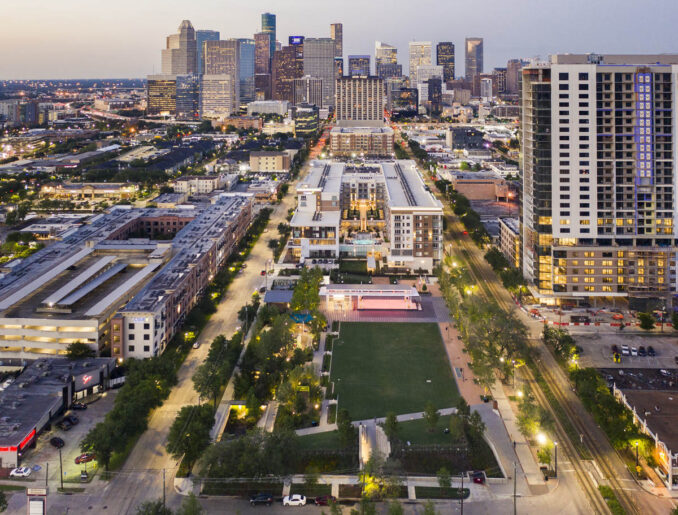
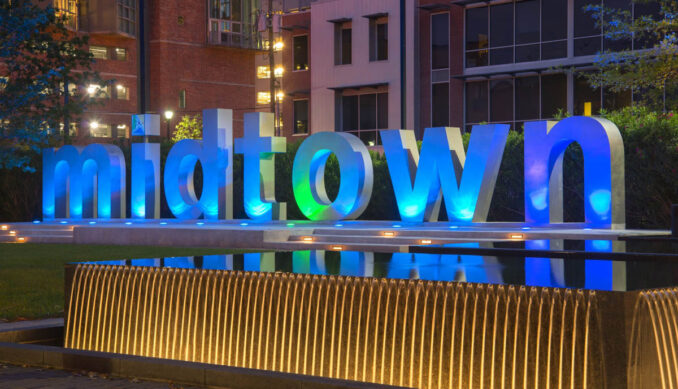
Repeated hurricanes and droughts have taken their toll on the Bayou City and raised awareness of the need for a more resilient city. The transformation of Midtown demonstrates the ability of landscape architects to shape urban form and to provide the benefits of green infrastructure through a performance-based landscape. The creation of urban design standards, the design of 11.25 acres of parks and 4.55 miles of roadways, including the first certified Green Road in Texas, the landscape architects helped to create Houston’s premier mixed-use, multi-modal district from what was once a neglected neighborhood. In the face of climate change and rising seas, these design interventions point the way to a more sustainable coastal environment. Through creative place-making, the landscape architects have driven enormous economic value, reducing vacancies, increasing property values, and producing a significant return on investment in infrastructure and improvements to the public realm. With extensive community engagement, Midtown remains a socio-economically diverse neighborhood with more equitable access to parks, open space, and the benefits of urban living for all.
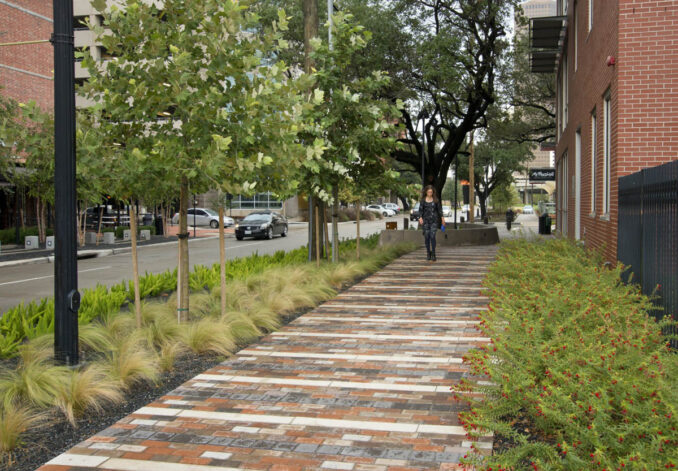
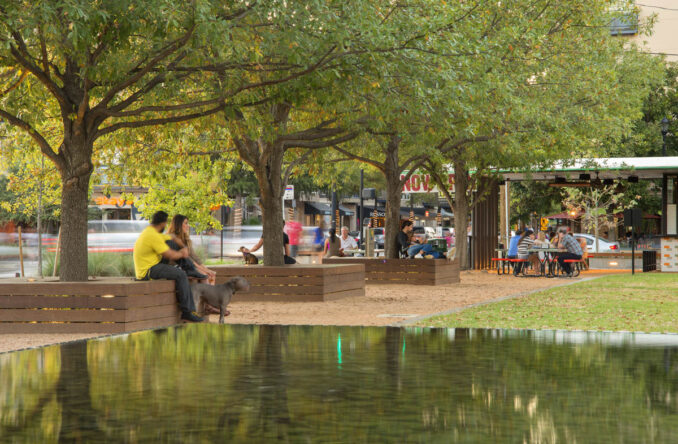
Despite its rich history, an ideal location, the establishment of Tax Increment Reinvestment Zone (TIRZ), and some signature investments from the City as of the late 2000’s, Midtown was still struggling to meet its potential. What began as a Livable Center Study in 2010 in an effort to breathe new life and redevelopment into the Midtown District has led to over 10 years of implementation projects. Our early analysis identified three existing ‘subdistricts’ that each drew significant activity at various times of day and night. In between these districts were broken pedestrian systems and empty parcels. Walking felt unsafe, uncomfortable, and even dangerous. Aided by changes to the regulatory framework, the design team has filled these gaps and connected the subdistricts through a series of key placemaking moments. Along Main Street, the team introduced iconic lights that march down Midtown’s tallest buildings and reinforce the identity of Midtown along METRO’s light rail system that stretches from downtown to NRG stadium. Bagby Street designed specific materials and furnishings to reflect the industrial character of Houston as port city. Midtown Park constructed a water channel and detention system which abstracts the natural bayous, shrubs swamps, and bottomland forests of Houston. Bagby Park created tall ‘midtown’ letters as a backdrop for unprecedented views of the downtown skyline.
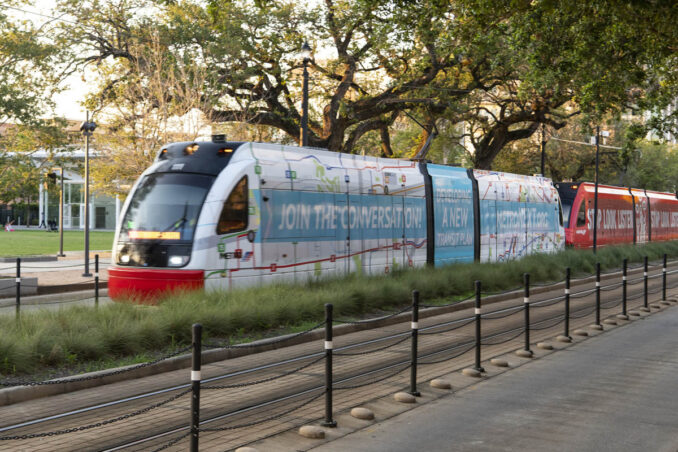
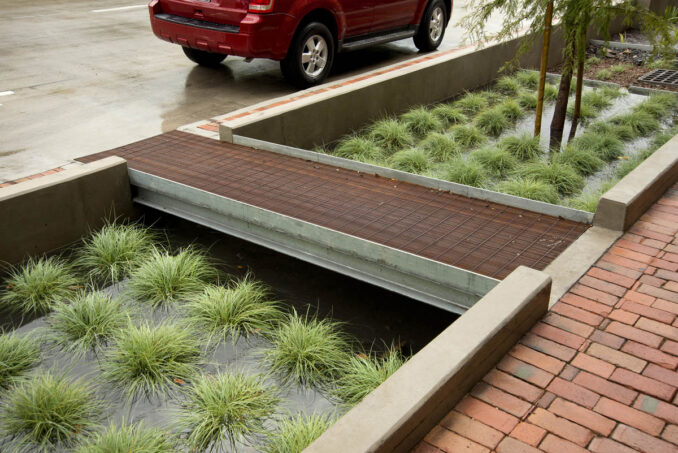
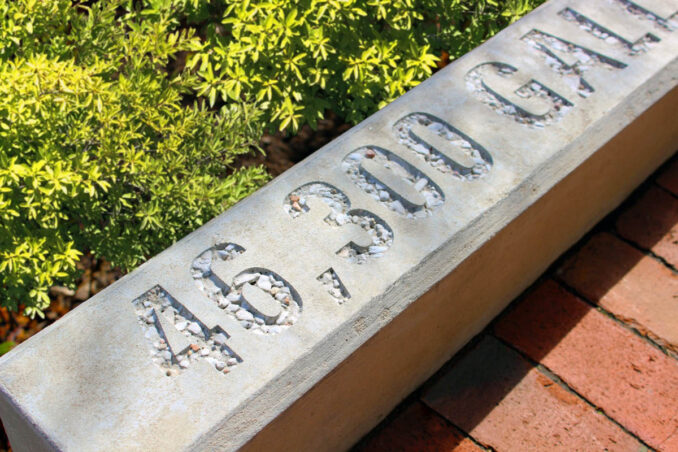
These projects and others have contributed to the 50% growth in Midtown’s population since 2012. Bagby Street and Midtown Park alone have generated over $450 million dollars in private investment since construction. With an understanding of comprehensive planning, urban design, and sustainable park and street design, the landscape architect created a vision of the public realm that incentivized support from the community, local governments, and private developers. Midtown, which was largely filled with vacant parcels and underutilized parking lots, has become the model for urban living surrounded by a green oasis.
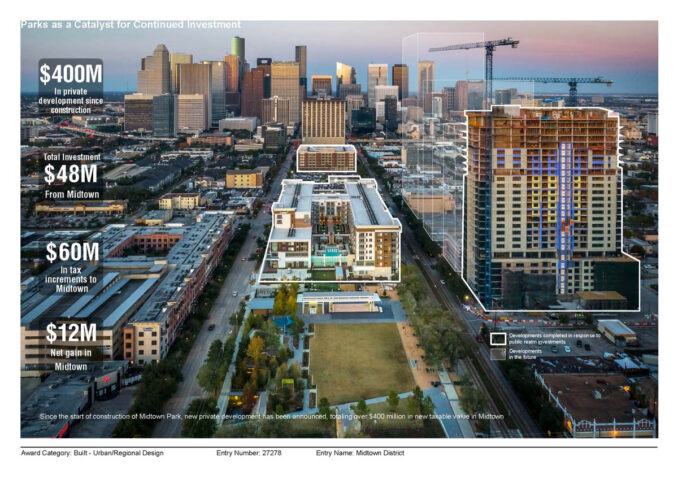
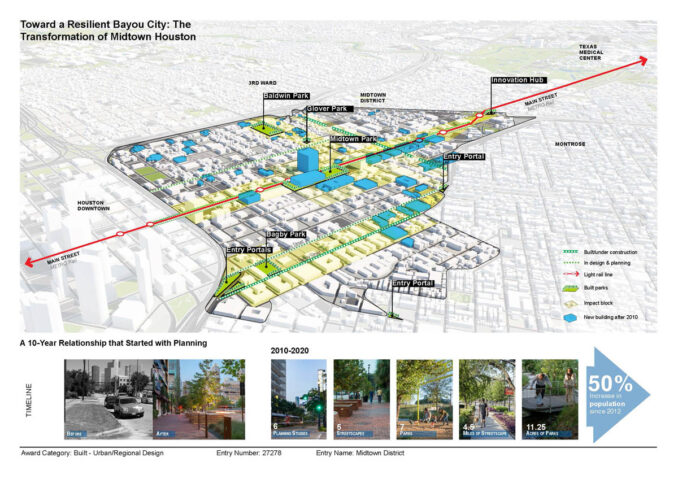
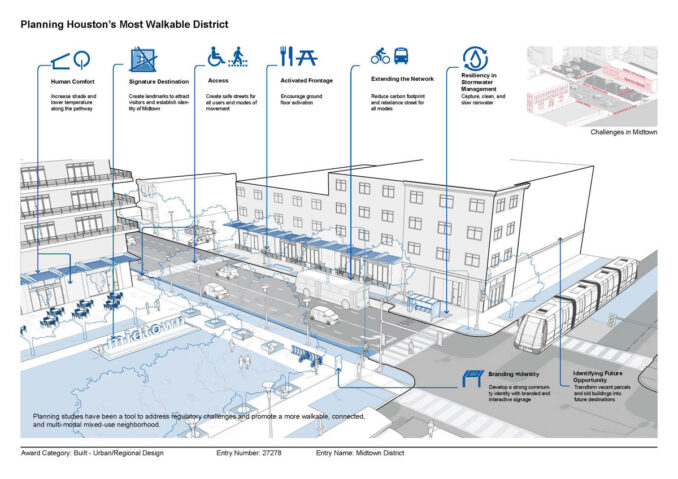
Midtown District
Location: Houston, Texas, USA
Image Credits: All provided images from Design Workshop, Inc
Landscape Architecture and Urban Design: Design Workshop
Kurt Culbertson, Claire Hempel, Alex Ramirez, Sarah Delcambre, Alex Hill, Tarana Hafiz, Brian Chambers, Steven Spears*, Rebecca Leonard*, Philip Koske*, Jason Ferster*, Steve Moore*, Mary Martinich*
* no longer at Design Workshop
Consultants/Collaborators
Nelson-Nygaard
Walter P Moore
Knudson
Urban Architecture
Water Design, Inc.
Regenerative Environmental Design
The Goodman Corp
Lionheart Places
RPH
